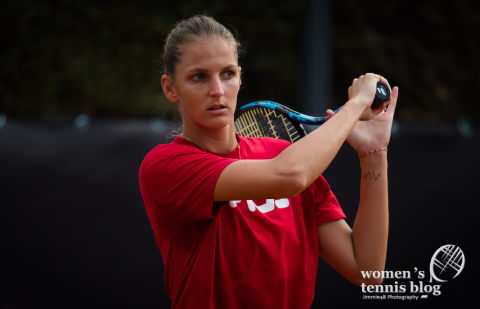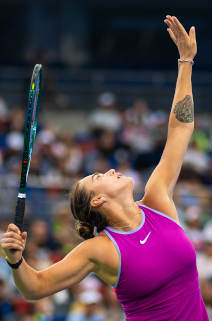Tennis players can use various strengths to dominate opponents: some opt for power to reduce their opponent’s time for reaction and base their strategy on fast-pace balls, while others focus on consistency to see how their opponent is dealing with repetitive balls. Coach Marcin Bieniek, founder of Enjoy Tennis Blog, will explain how to train and make more conscious decisions in order to use consistency in your favor.
 Consistency simply means not missing the ball. Consistent players hit the balls over the net and try to force their opponents to take more risk and make more unforced errors. This strategy can be effective against impatient players who look for quick solutions that are based on power, as well as against opponents with poor stamina, as it will put a lot of pressure on their physical weakness and they will probably start making more mistakes than usual.
Consistency simply means not missing the ball. Consistent players hit the balls over the net and try to force their opponents to take more risk and make more unforced errors. This strategy can be effective against impatient players who look for quick solutions that are based on power, as well as against opponents with poor stamina, as it will put a lot of pressure on their physical weakness and they will probably start making more mistakes than usual.
Your ability to maintain a cross-court rally or hit balls from different areas on the court without losing quality of your shots can be a deciding factor in matches, especially against more advanced opponents. As with any other tennis skill, you have to properly approach all the factors that consistency depends on and include them into your training routine to develop automatic habits that will take your performance to a higher level.
Technique
Technique is the base. Without solid technical level, it is impossible to play good-quality balls over and over again. If you have visible weaknesses in your motion, it will have a negative impact on your quality. Make sure you constantly improve your strokes, so that you feel comfortable keeping the ball in play in any direction and from any area on the court.
Reading opponent’s ball
Every ball in tennis is different. Opponents will try to surprise you by changing the pace, direction, depth, spin and trajectory of their shots to put more pressure on your response. If you are not aware of these details, you won’t be able to make right adaptations and it will negatively impact your consistency. Focus on the incoming ball, because it is the first step to make decisions related to your body and racquet.
Tactical approach
At the beginner level keeping the ball in play and placing it anywhere on the court is enough to win points. However, when you compete against more advanced players, you have to be aware where you’re hitting the ball. If you hit the ball too short or to the opponent’s strength, you can have big problems. Paying attention to the direction and depth of your shots is an important aspect that can’t be omitted while training and using consistent approach.
Consistent play is one of the basic approaches that can be used at any level and against any style of the opponent, however, to get all the benefits you have to pay attention to the factors that impact the final level of your consistency and train smartly to make sure that your opponent is the one that makes more mistakes in crucial points.
Visit our Tennis Tips page for a lot more articles by tennis coaches. There you can learn how to improve specific shots and skills, handle pressure, adapt your game to all surfaces and weather conditions, choose the best tennis racquet, and much more.







